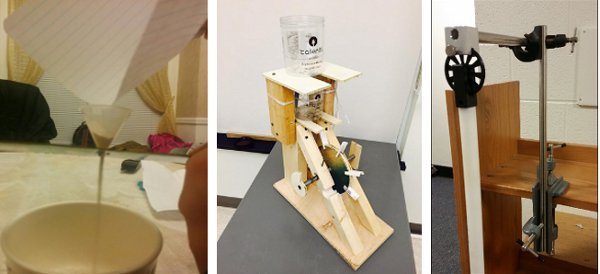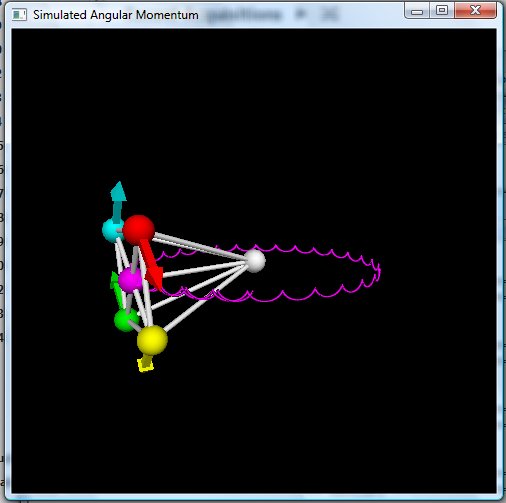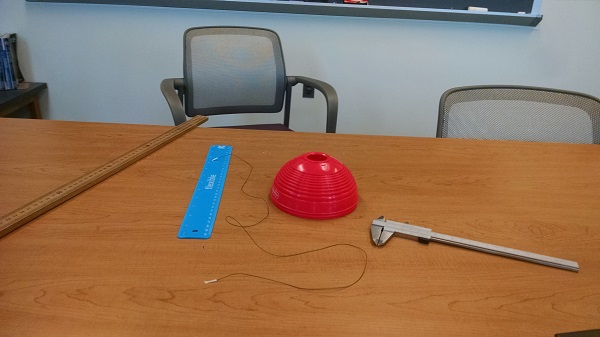I’m teaching introductory mechanics for the umpteenth time, using the Matter and Interactions curriculum, as we have for a while. This is going to be my last time teaching out of M&I, though, because last year the department decided to switch to a different book. Starting this winter term, we’ll be using Halliday, Resnick and… Continue reading Reflections on Matter and Interactions
Category: Course Reports
Imaginary Syllabus: Science of Sports and Games
It’s one of those days where none of the stuff I probably ought to be writing seems even slightly appealing, so instead I’m going to do something frivolous and morale-boosting, namely think out loud about an imaginary course. Despite being on sabbatical, I do still check my work email, and have caught the edges of… Continue reading Imaginary Syllabus: Science of Sports and Games
Course Report: Intro Mechanics Spring 2015
I’ve been pretty quiet about educational matters of late, for the simple reason that I was too busy teaching to say much. The dust having settled a bit, though, I thought I would put some notes here about what I did this past term, and what worked. I had two sections of the introductory Newtonian… Continue reading Course Report: Intro Mechanics Spring 2015
Breaking Boards
One of the highlights of teaching introductory mechanics is always the “karate board” lab, which I start off by punching through a wooden board. That gets the class’s attention, and then we have them hang weights on boards and measure the deflection in response to a known force. This confirms that the board behaves like… Continue reading Breaking Boards
Toy Roller Coasters and the Energy Principle
One of the points I make repeatedly in teaching introductory mechanics (as I’m doing this term) is that absolutely every problem students encounter can, in principle, be solved using just Newton’s Laws or, in the terminology used by Matter and Interactions, the Momentum Principle. You don’t strictly need any of the other stuff we talk… Continue reading Toy Roller Coasters and the Energy Principle
Course Report: Brief History of Timekeeping
A few years ago, I taught one of our “SRS” classes, which are supposed to introduce students to research at the college level– I blogged about it while the course was in progress. I taught it again in the recently-concluded Winter term, but didn’t blog much about it because I was mostly doing the same… Continue reading Course Report: Brief History of Timekeeping
How Does Angular Momentum Emerge?
Yesterday’s post about VPython simulation of the famous bicycle wheel demo showed that you can get the precession and nutation from a simulation that only includes forces. But this is still kind of mysterious, from the standpoint of basic physics intuition. Specifically, it’s sort of hard to see how any of this produces a force… Continue reading How Does Angular Momentum Emerge?
The Emergence of Angular Momentum
The third of the great physics principles introduced in our introductory mechanics courses is the conservation of angular momentum, or the Angular Momentum Principle in the language of the Matter and Interactions curriculum we use. This tends to be one of the hardest topics to introduce, in no small part because it’s the last thing… Continue reading The Emergence of Angular Momentum
Semi-Competent Astrophotography and Sidereal Days
I’m teaching my “Brief History of Timekeeping” class again this term, and as always, I’m tweaking things a bit. This is one of our “Sophomore Research Seminar” courses, intended to introduce students to academic research, so it’s not specifically a physics class, but I’m choosing to take the statements about research outside the student’s field… Continue reading Semi-Competent Astrophotography and Sidereal Days
General Relativity With Toddler Toys
A couple of times last week, I mentioned on Twitter that I was going to demonstrate relativity with toddler toys and string. This was an inspiration that hit late on Thursday, when I was trying to think of a better way to explain embedding diagrams (the technical term for those stretched-rubber-sheet pictures that everybody uses… Continue reading General Relativity With Toddler Toys





